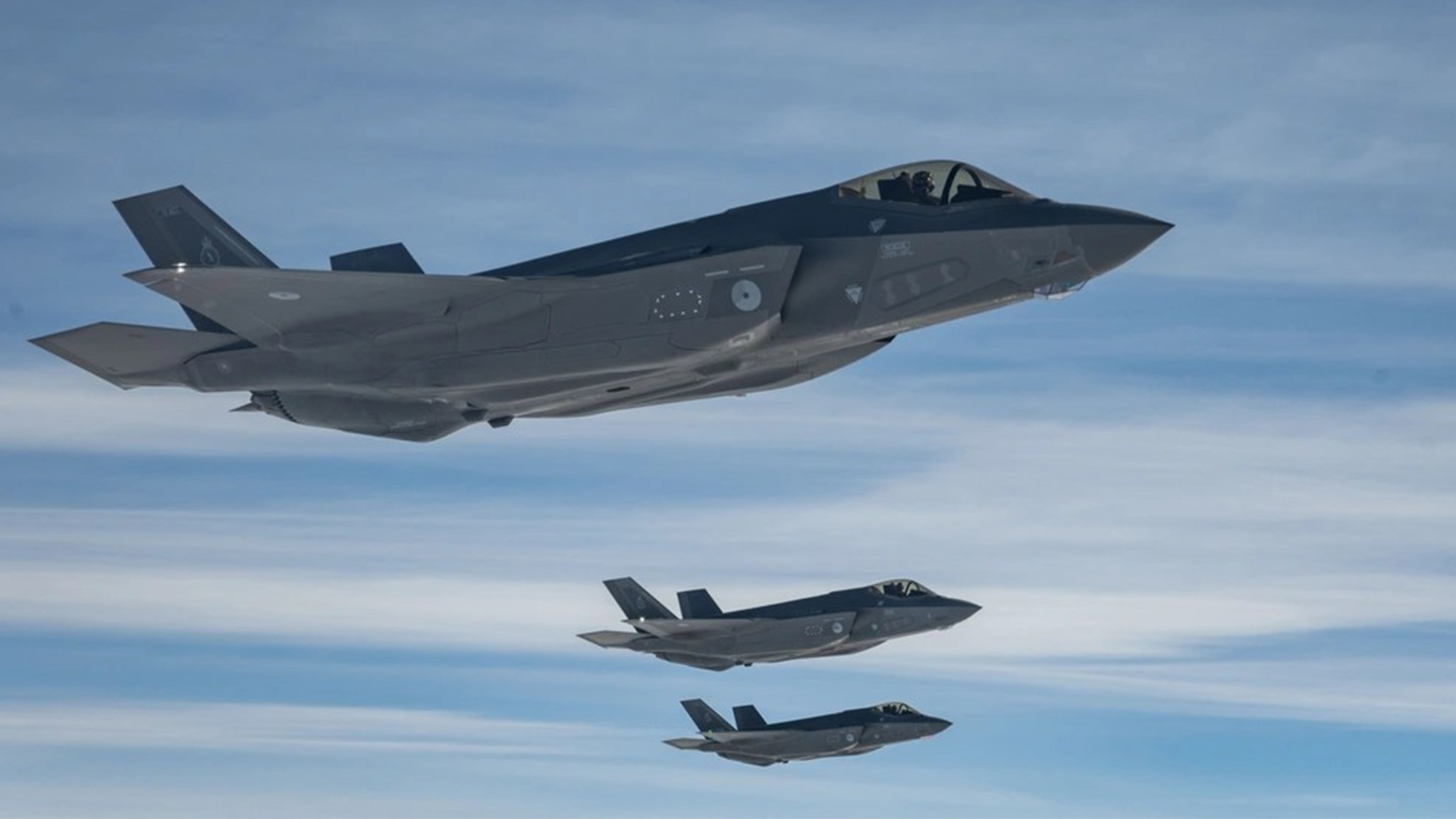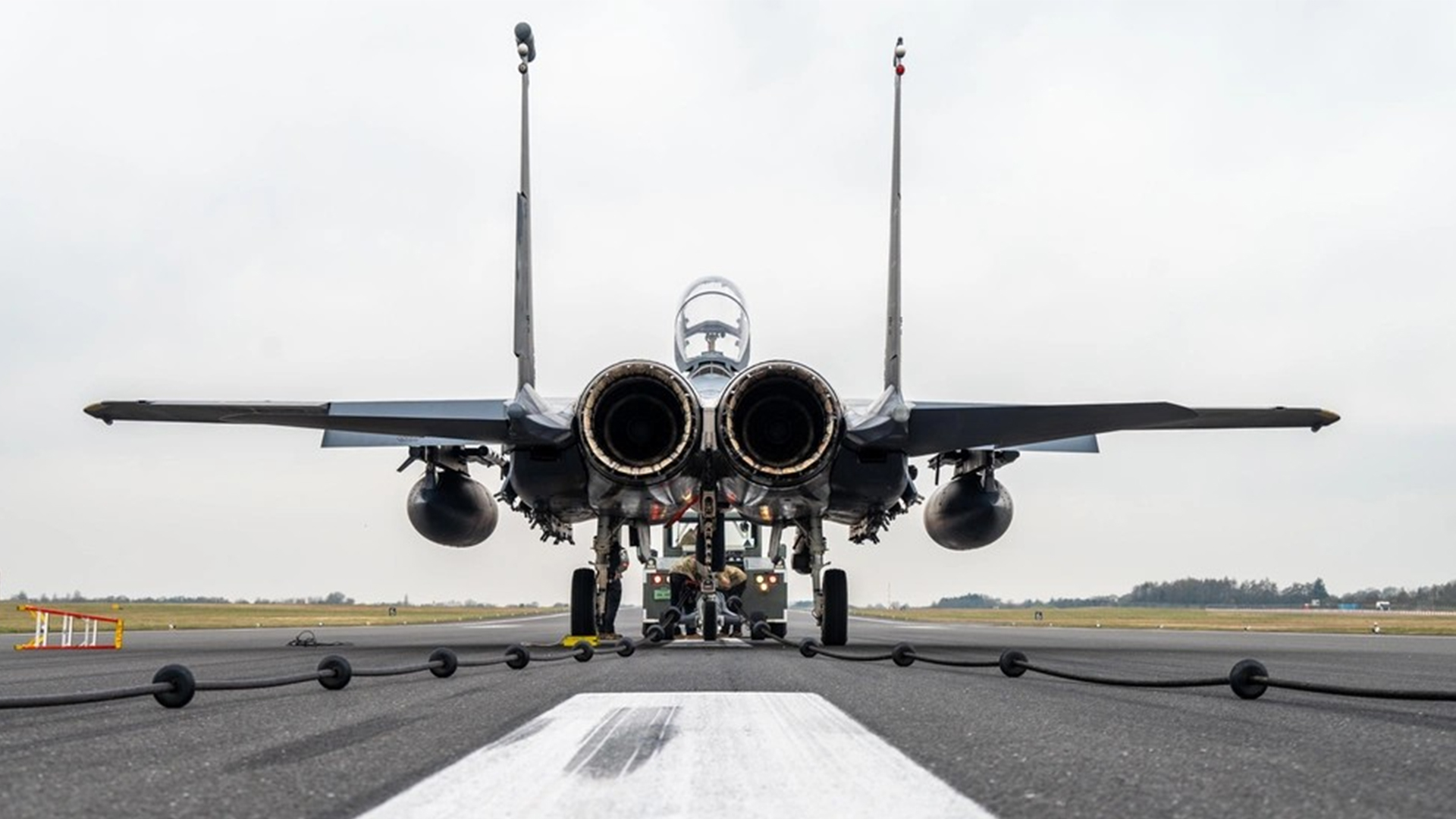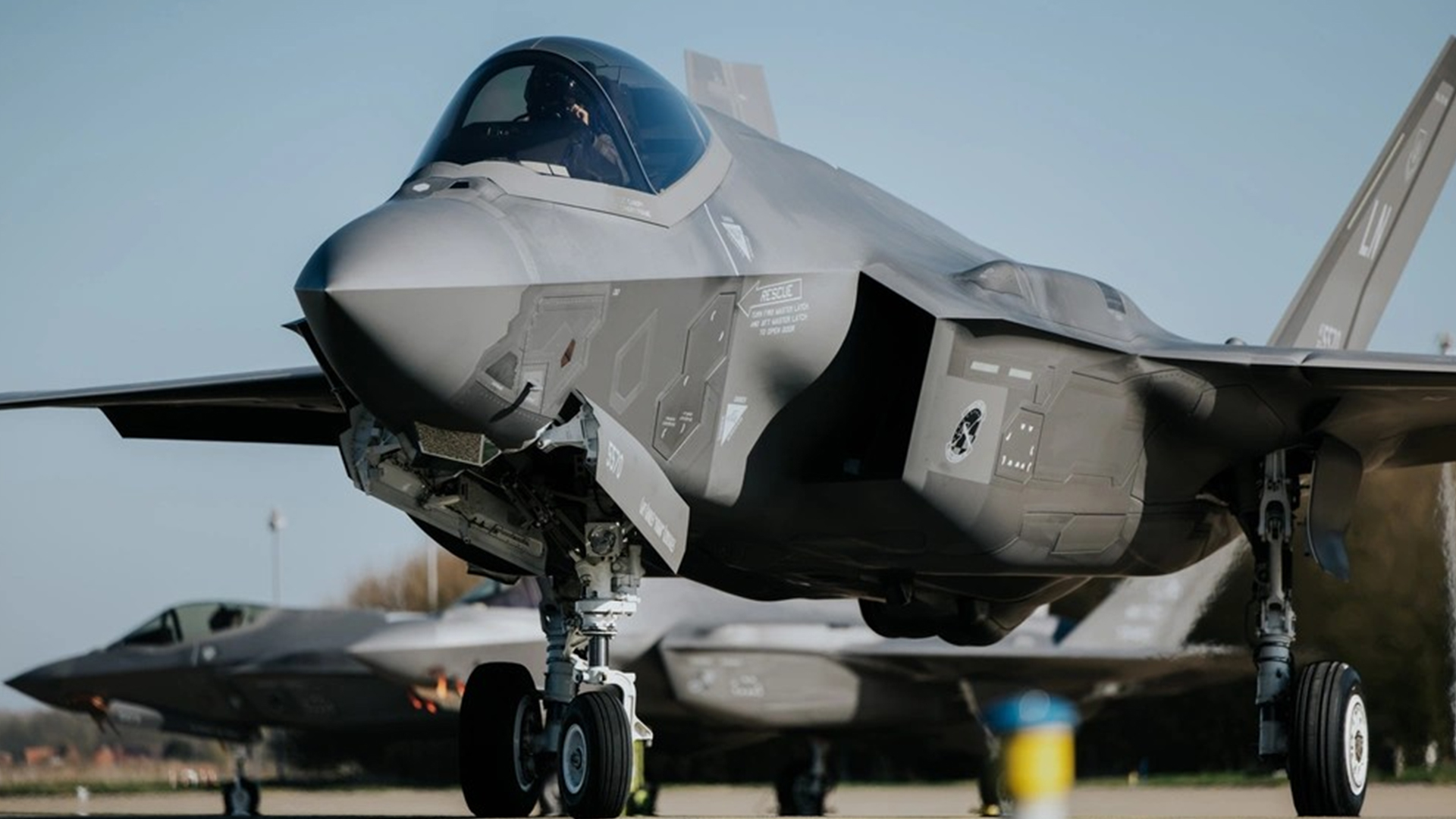Exclusive: Nato practises offensive tactics that could get aircraft inside of Russia
The commander of Allied Air Command has told BFBS Forces News that Nato's largest air exercise of the year has seen personnel practise tactics that could be used if there was an offensive mission trying to get aircraft inside Russia.
Exercise Ramstein Flag involved more than 90 aircraft and more than 2,000 personnel from 15 of Nato's 32 countries, which were operating from 12 different bases across Europe.
The main hub was at Leeuwarden Air Base in the Netherlands, home to many of their F-35s. They were practising how Nato would deal with a scenario involving an invasion of Allied territory.
General James Hecker is responsible for the air and missile defence of Nato whilst also commanding US airpower across Europe and Africa.
I asked him what real-world situations the combined air power that's been on display during the exercise could be used for, specifically could it be used to enforce a no-fly zone over Ukraine.
He said: "It can be used for a lot of things. For your specific example, no question it could be used to enforce a no-fly zone.
"But it's more than just that, we're talking integrated air and missile defence of Nato countries, it can be used for that, and it can be used for counter anti-access aerial denial, so if it was an offensive mission where we're trying to get aircraft inside of Russia.
"Now we hope that exercises like this will deter our adversaries so we never have to do that, but if there does come a time where we have to do that, we'll be ready for it."

New members involved too
Nato's two newest members participated, with Sweden providing six JAS 39 Gripen aircraft and Finland sending five F/A-18s.
In the UK, RAF Marham hosted six F/A-18 Hornet aircraft from the Spanish air force, while RAF Typhoons from RAF Lossiemouth practised air-to-air refuelling alongside partner nations.
At RAF Fairford, US forces hosted Turkish and Romanian fighter, refueller and cargo aircraft throughout the exercise.
Gen Hecker said: "We are showing deterrence to our enemy… there are things that we found that we need to get better at after watching Russia operate for over two-and-a-half years now, and all of those priorities come up in a Ramstein Flag event.
"The US learned a lesson after the fight with Korea, the fight with Vietnam, that a lot of our aircrew and aircraft were lost in the first 10 days of war.
"And that's what our Red Flag, when it stood up back in 1970s, was meant to get after, and that's what Ramstein Flag is meant to get after as well as in sending a deterrence message to Russia.
"So they don't do anything that we don't want them to do.

A large-scale exercise
It was a rare chance for personnel to gain experience taking part in a large-scale exercise, as Commodore Marcel Van Egmond, the Commandant Air Combat Command, Royal Netherlands Air Force, pointed out.
He said: "As a team, like all the soccer players in a field, they're individually very good, but only with a good coach and strong training you can make the greatest team in the world that can be world champions.
"Individually there can be players that may not be there yet, or do not have the same assets.
"And like here we have different aircraft, so we learn the strengths and weaknesses of those aircraft. We learn how we can utilise each other in the best way. And make the sum of all the parts bigger than a normal sum."

A volatile world
There was a sobering acknowledgement throughout the exercise of how volatile the world is in 2025.
Lieutenant General Andre Steur, Commander of the Royal Netherlands Air Force, said: "It's a strange world we're living in right now, and that keeps me awake sometimes at night.
"I sometimes phrase it as, it seems like the whole world is on fire.
"And what a great moment in time, and now, maybe more important than ever, that we are here together with so many nations, training together for something we hope we never have to execute."

Fears of a US shift away from Europe
On many people's minds since President Trump was elected is the ongoing fear that the US will begin a reprioritisation of focus away from Europe.
During a press conference, when asked about the commitment of the new US administration to Nato and concerns about capability gaps in European air forces, General Hecker said: "As you know we recently elected a new president in the United States, and we're still trying to figure out the exact policies that they're going to be coming out with.
"But I know that we're going to be here in Europe, as evident now here at Ramstein Flag 25.
"In fact, we're already starting to look at Ramstein Flag 26. As far as filling in the gaps, I think you've seen that over the last couple of years a lot of Europeans have bought fifth-generation aircraft to the point where they're going to have about 750 of them by about 2032 time frame.
"And at that time frame, only 54 of those are going to be the US, and that's the number that we had planned before this administration.
"So I think you're going to see us hand in hand with the Europeans for quite some time."









